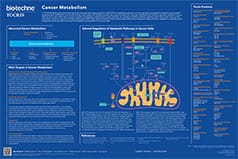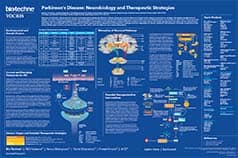ER Stress/Unfolded Protein Response
Endoplasmic reticulum (ER) stress occurs when the protein synthesis requirements of the cell exceed the protein folding capacity of the ER. Improperly folded proteins accumulate in the ER, which triggers the unfolded protein response (UPR) to restore ER homeostasis.
Following translation, secreted and transmembrane proteins enter the lumen of the endoplasmic reticulum (ER), where they are post-translationally modified and properly folded in the presence of specialized chaperone proteins. This process is overwhelmed during ER stress, which can be triggered by stimuli such as nutrient deprivation, infection, toxins or mutations in abundantly expressed proteins.
In severe cases, the accumulation of improperly folded proteins can cause cell death, so in order to relieve ER stress and restore ER homeostasis, the cell activates a series of signaling pathways, collectively called the unfolded protein response (UPR).
The UPR is regulated by three main proteins: inositol-requiring enzyme 1α (IRE1α), PKR-like ER kinase (PERK) and activating transcription factor 6 (ATF6). Under normal conditions these proteins are inhibited via the binding of chaperone protein BIP, also known as GRP78, which is a member of the Hsp70 family. However, under ER stress conditions BIP dissociates to assist with protein folding. This process activates IRE1α and PERK and causes the translocation of ATF6 to the Golgi apparatus, where it is cleaved to initiate UPR-gene transcription.
The UPR results in the reduced synthesis of new proteins, the upregulation of proteins that aid correct protein folding, such as protein disulphide isomerase (PDI), and the upregulation of ER-associated protein degradation program (ERAD) proteins. These linearize improperly folded proteins which are ultimately ubiquitinated and degraded by the proteasome.
In cases of chronic ER stress, homeostasis may not be restored and the cell may initiate cell death. This is seen in a number of neurodegenerative disorders, such as Parkinson's disease and Alzheimer's disease, which are exacerbated by aggregates of misfolded proteins. The UPR response is also linked to cancer, in which IRE1α mutations are common, as all pathways in the UPR are proposed to promote cancer progression.
ER Stress and the Unfolded Protein Response (UPR)

Figure 1: Schematic showing the UPR signaling pathways initated during ER stress. The process of post-translational modification and protein folding is overwhelmed during ER stress and results in the accumulation of improperly folded proteins, which can ultimately cause cell death. In order to relieve ER stress and restore ER homeostasis, the cell activates a series of signaling pathways, collectively called the unfolded protein response, which upregulates proteins that aid correct protein folding or mediate the degradation of improperly folded proteins.
Adapted from Todd et al. (2008) Nat.Rev.Immunol. 8 663.
Literature for ER Stress/Unfolded Protein Response
Tocris offers the following scientific literature for ER Stress/Unfolded Protein Response to showcase our products. We invite you to request* your copy today!
*Please note that Tocris will only send literature to established scientific business / institute addresses.
Cancer Metabolism Research Product Guide
This product guide reviews some of the main areas in cancer metabolism research and lists around 150 products that can be used to investigate metabolic pathways in cancer including:
- Glycolysis
- Tricarboxylic Acid Cycle
- Lipidogenesis
- 1C Metabolism and Nucleic Acid Synthesis
- Drivers of Metabolic Reprogramming
- pH and Redox Balance
Cancer Metabolism Poster
This poster summarizes the main metabolic pathways in cancer cells and highlights potential targets for cancer therapeutics. Genetic changes and epigenetic modifications in cancer cells alter the regulation of cellular metabolic pathways providing potential cancer therapeutic targets.
Parkinson's Disease Poster
Parkinson's disease (PD) causes chronic disability and is the second most common neurodegenerative condition. This poster outlines the neurobiology of the disease, as well as highlighting current therapeutic treatments for symptomatic PD, and emerging therapeutic strategies to delay PD onset and progression.



